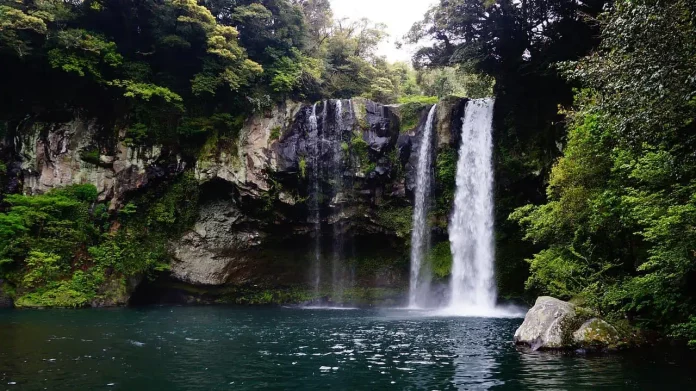Mexico boasts of numerous waterfalls scattered across its various terrains. From the dense forests of Chiapas to the arid landscapes of Chihuahua, these cascades vary in size, shape, and surroundings. Each waterfall has a unique charm that fascinates the visitors with its different natural charm. Among these are many tourist attractions. So now let’s venture into the wonderful world of the most famous waterfalls in Mexico to explore their magnificence.
Must-See Waterfalls in Mexico for Adventure Seekers
Basaseachic Falls
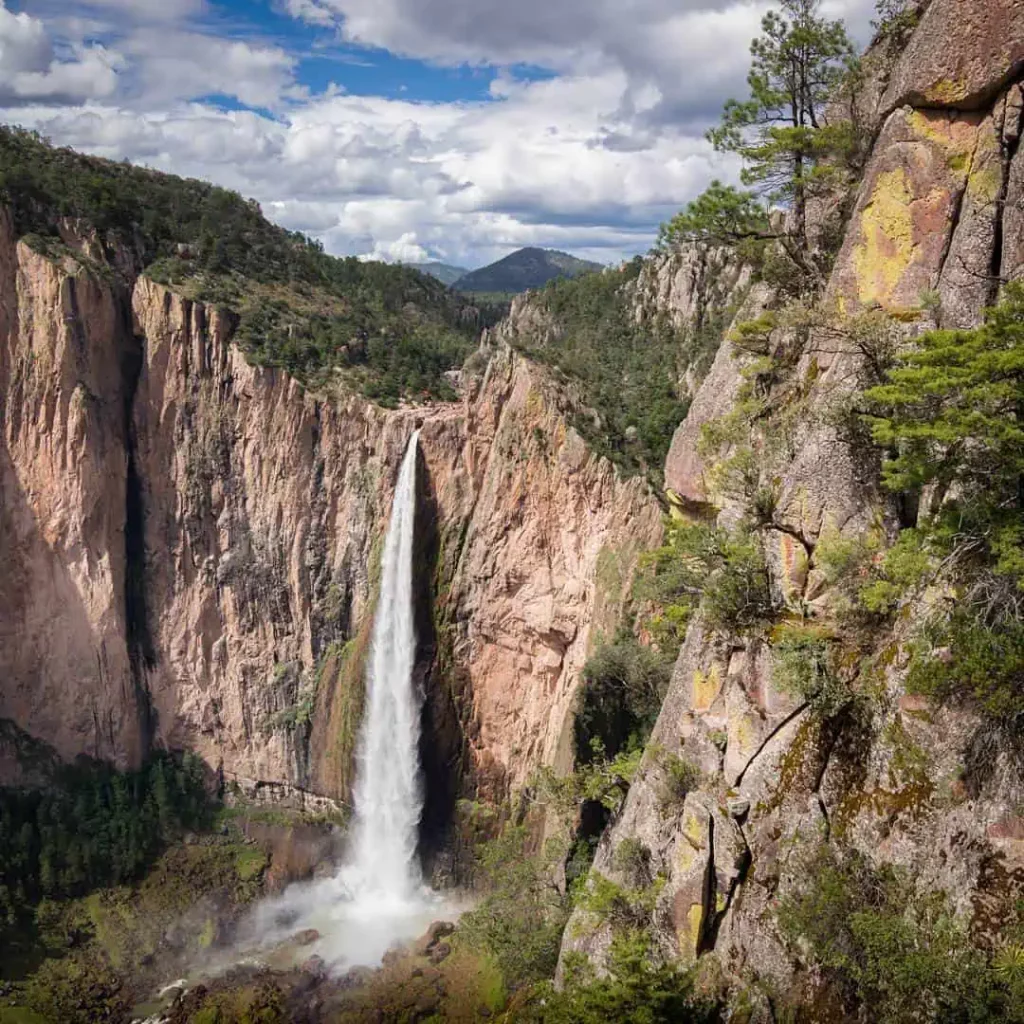
Basaseachic Falls is located in the Basaseachic National Park in the Copper Canyon area of Chihuahua. It is Mexico’s second-tallest waterfall. Its breathtaking grandeur is highlighted by a drop of around 246 meters. The falls are formed by two rivers, the Arroyo del Durazno and the Arroyo de Basaseachic, which unite in the highlands and flow down the canyon wall. The rainy season, from June to September, is the best time to see Basaseachic Falls. This is because this is the peak flow time. While touring, visitors may be able to observe the breathtaking landscapes, explore adjoining hiking paths, and feel the quiet and pure beauty of the surroundings.
Cascada Piedra Volada
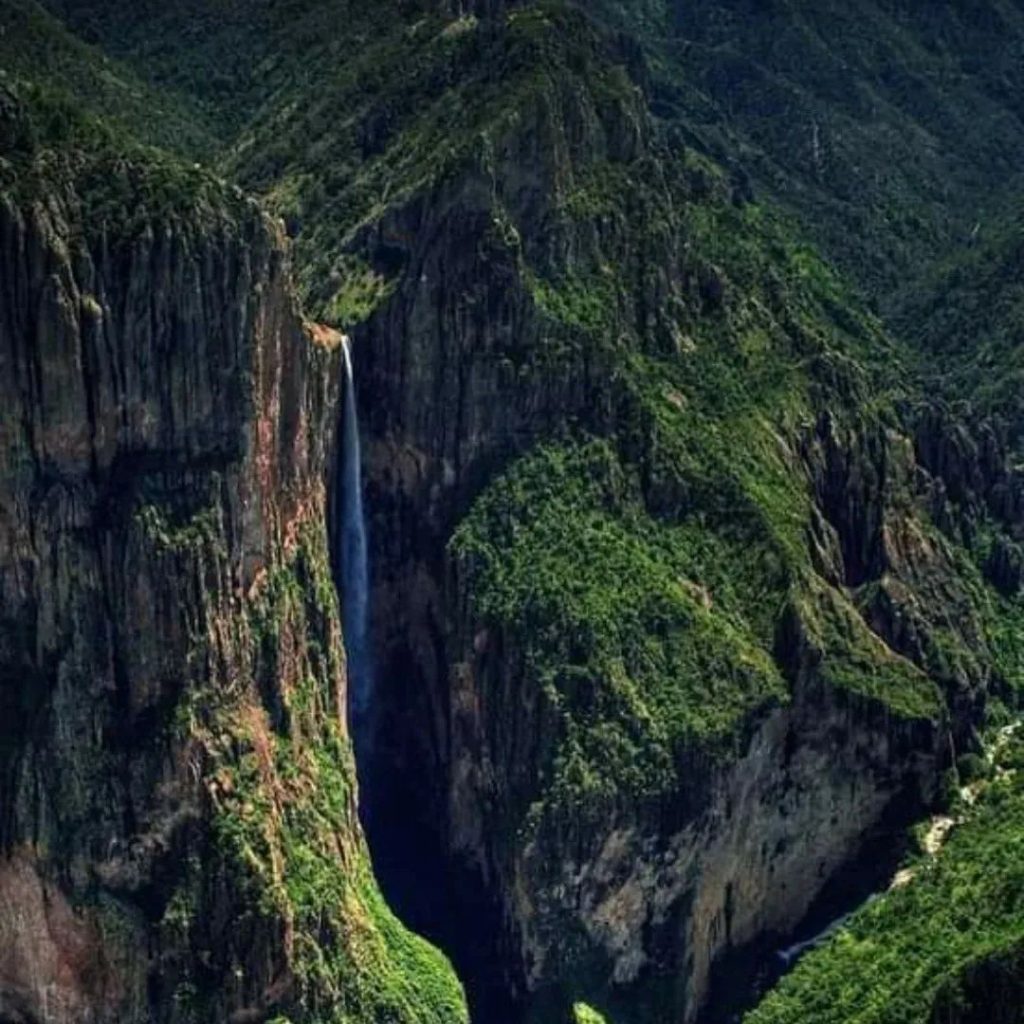
When talking about waterfalls in Mexico, Cascada Piedra Volada cannot be missed, because it is the highest waterfall in Mexico. Located in Copper Canyon of Basaseachic Fall National Park, it is 453 meters or 1486 feet high. The meaning of this name is Flying Stone Fall and the reason for that name is the round shape of the rock falling down the falls. The specialty here is that it is not active throughout the year but only during the rainy season from June to October.
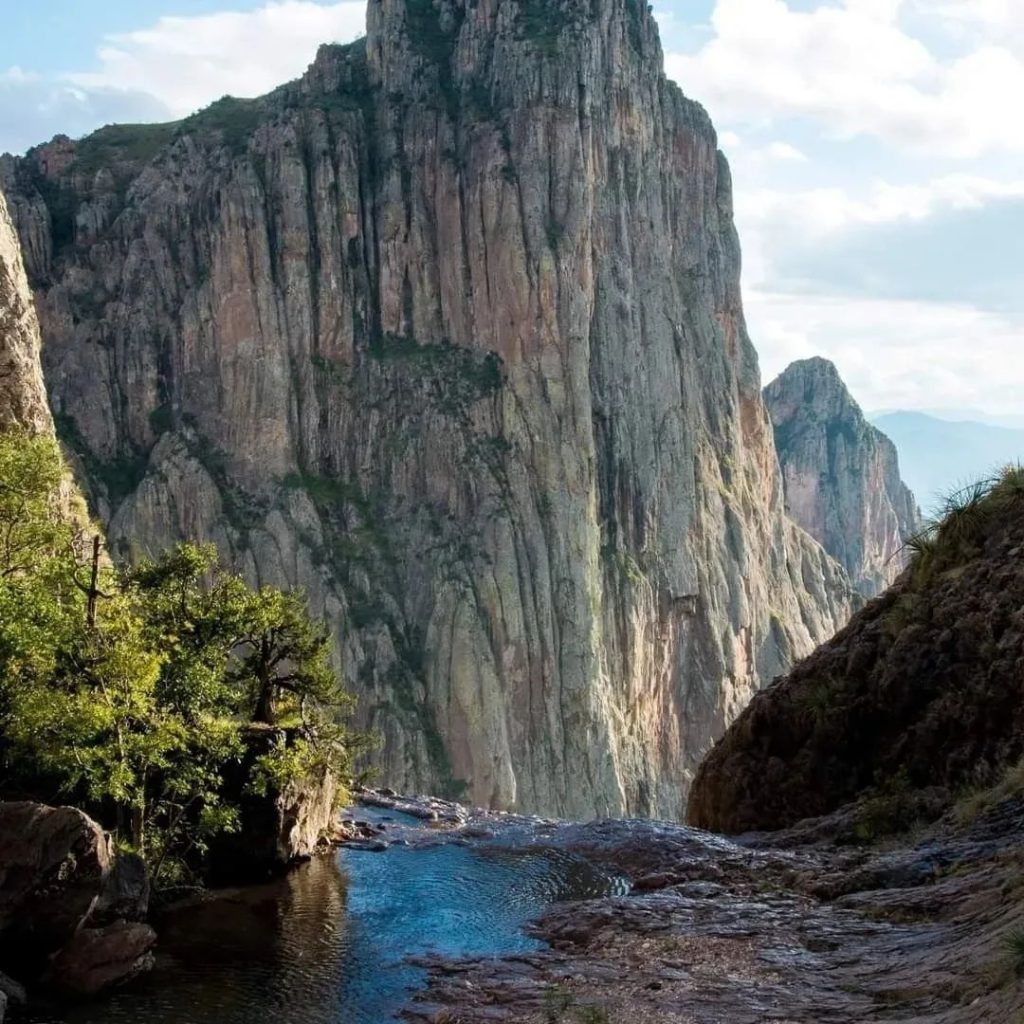
It is possible to view the waterfall from a moderate distance on the edge of the canyon near Huahumar, at an altitude of about 700 meters or you can go to the top where the waterfall started to fall. It should be remembered that one day of climbing is required to reach the waterfall and it is quite a difficult journey. If you choose to go on this trip, it is imperative to get a well-prepared and experienced guide service. The best time to visit the Cascada Piedra Volada is during the rainy season from June to October.
Cascadas de Agua Azul
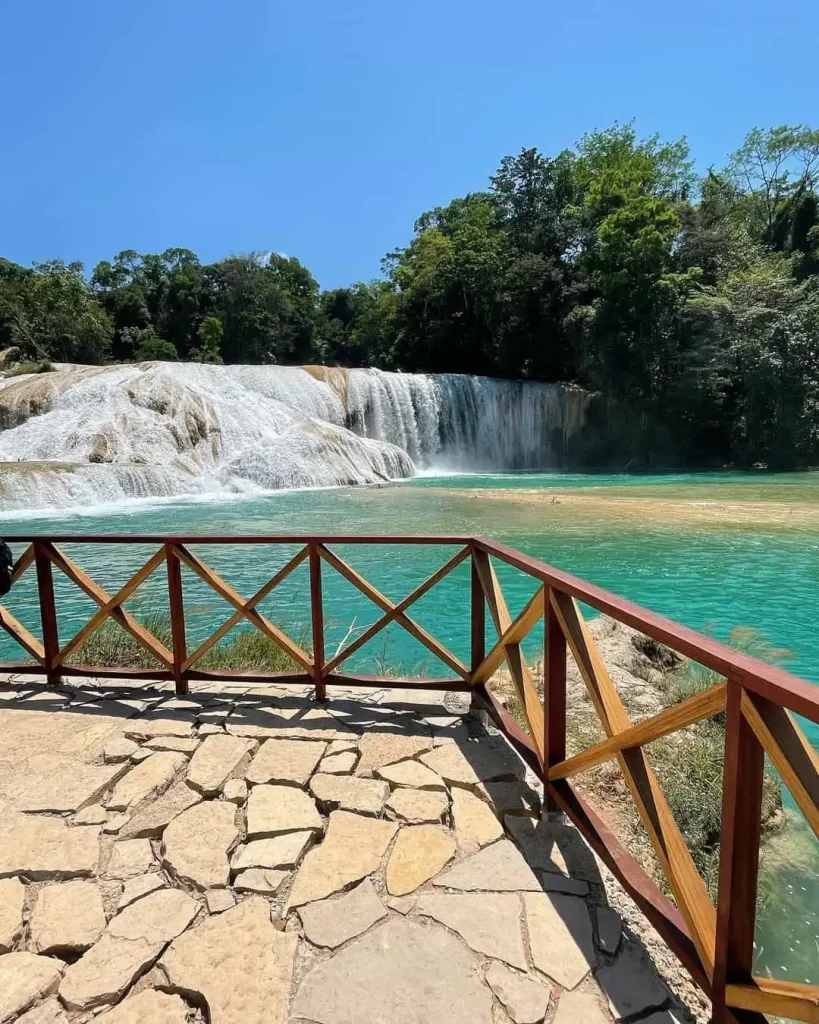
Cascadas de Agua Azul is located in Chiapas, Mexico, and is only 20 meters high. The meaning of the name is Blue Falls in Spanish. It flows as a bunch of small waterfalls and then it flows down and it must be said that a small island has also been created in the middle. Due to the high calcium carbonate and many other minerals in this water, a limestone cover has formed on the rocks and trees, and therefore this waterfall has become a natural wonder.
The colorful turquoise water falling over them has been able to attract so many visitors. The best time to visit Cascadas de Agua Azul is from November to May in the dry season. During this time, the water is crystal clear and perfect for swimming and capturing beautiful moments. Accessible trails, beautiful surroundings, and crystal clear pools make the Cascades de Agua Azul an irresistible destination for nature lovers seeking Mexico’s stunning landscapes.
Cascadas El Chiflon
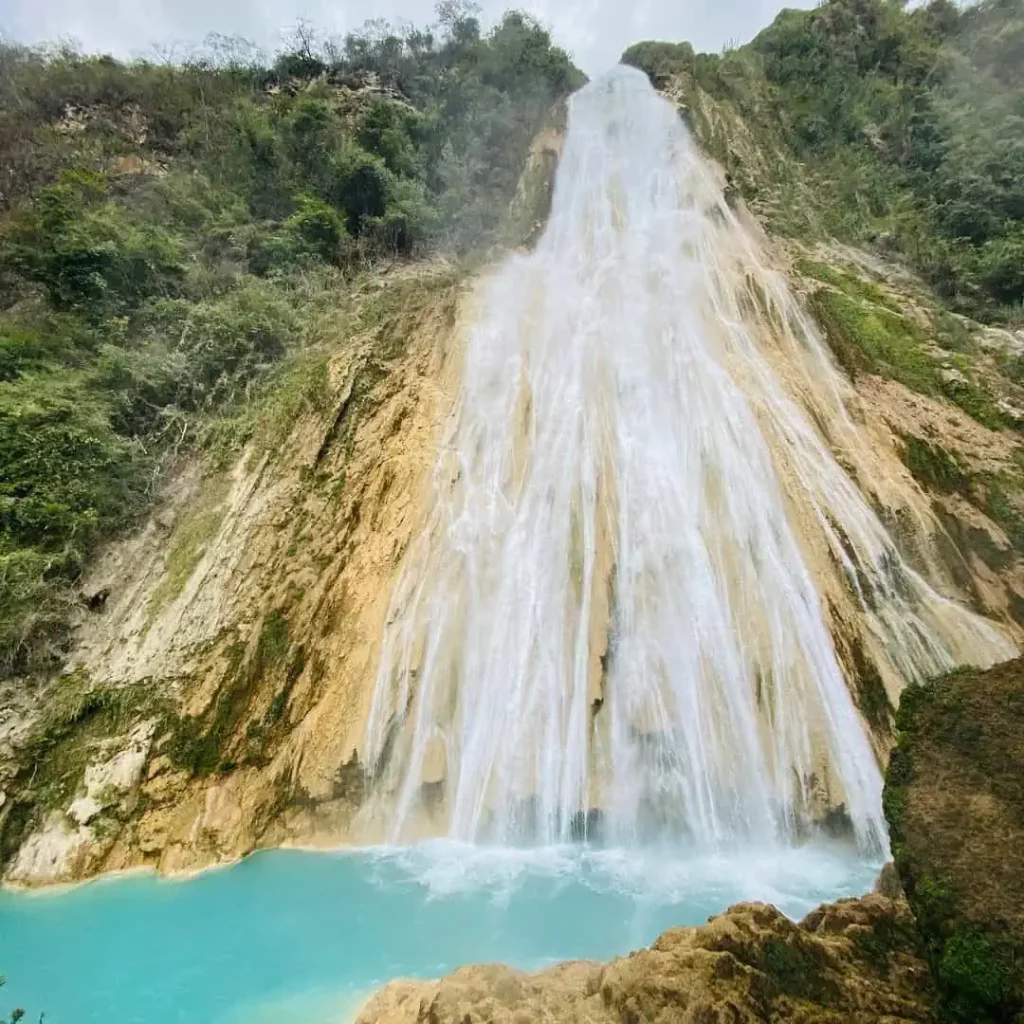
Are you ready for a destination with five giant waterfalls in Mexico and many swimming pools filled with turquoise water? The Cascadas El Chiflon group of waterfalls in Maxico’s southernmost state will testify to this. It is worth seeing the beauty of these waterfalls and even more so the opportunity to swim in the turquoise waters of the natural swimming pools. And the possibility of enjoying zip lining or spending the night in a cabana on this route will make the trip an adventure destination.
After about 30 minutes from the starting point, You will reach the destination’s top attraction called the Velo De Novia waterfall which falls from a height of about 120 meters. There are 3 top platforms that have been constructed to view the falls and, Among them, the highest and the smallest platform is located right next to the waterfall. from there, you can see the best and most amazing view of the waterfall. The best time to visit these cascades is during the dry season from November to May when the falls are at their fullest, offering a breathtaking sight and ideal conditions for outdoor activities
Cola de Caballo
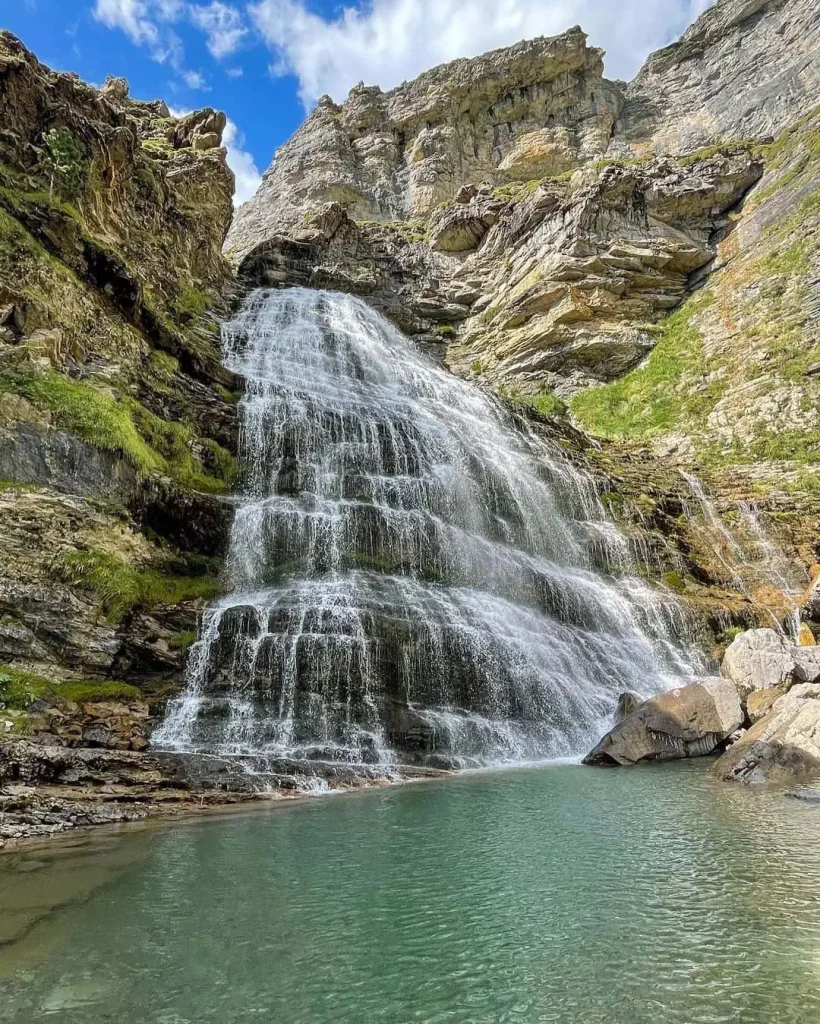
Cola de Caballo, or Horse Tail Falls in Spanish, is a spectacular waterfall in Nuevo León. It cascades down in the shape of a horse’s tail and is accessible to people of all ages by traveling along the mountain slopes. Tourists may enjoy the 25-meter-high waterfall and its surroundings. The habitat around here is a haven for several species of birds. You may even eat barbecue in adjacent restaurants while resting.
Not only that, but you may also discover handicrafts, souvenirs, and activities like horse or cart rides, hanging bridges, and zip lines in the neighboring areas. It must be said that the rainy season from June to October is the best time to visit here and because it is easily accessible, we suggest you confirm the visit here without thinking twice.
Cascada de Tamul
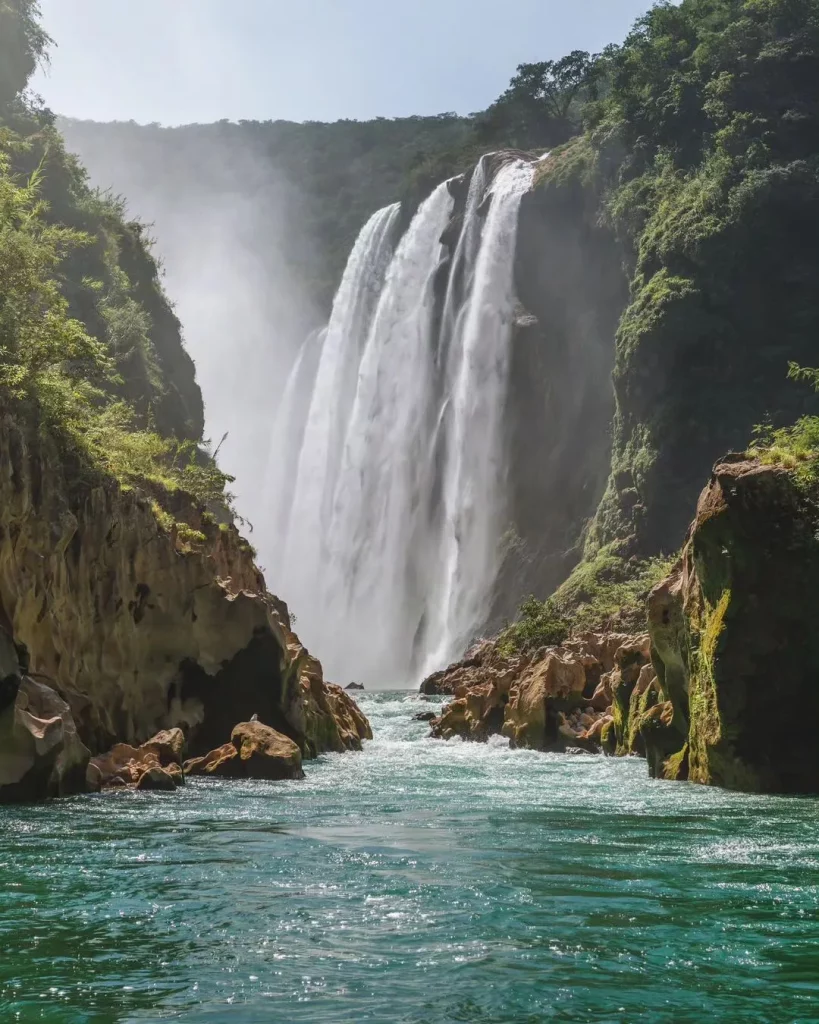
The Cascada de Tamul is one of the world-famous waterfalls in Mexico. It is located in the Huasteca Potosina region with a height of 344 feet. Legend has it that this was a sacred place for rituals and ceremonies that symbolized a connection between the earthly realm and the spiritual world, a belief held by the indigenous Huastec people. The best adventure of this trip is the one-hour boat trip to the up on the Tampaon River to see the waterfall. During the journey, you will get a free view of the small water waterfalls and beautiful surroundings. The best time to visit the Cascada de Tamul is from November to May.
Hierve el Agua
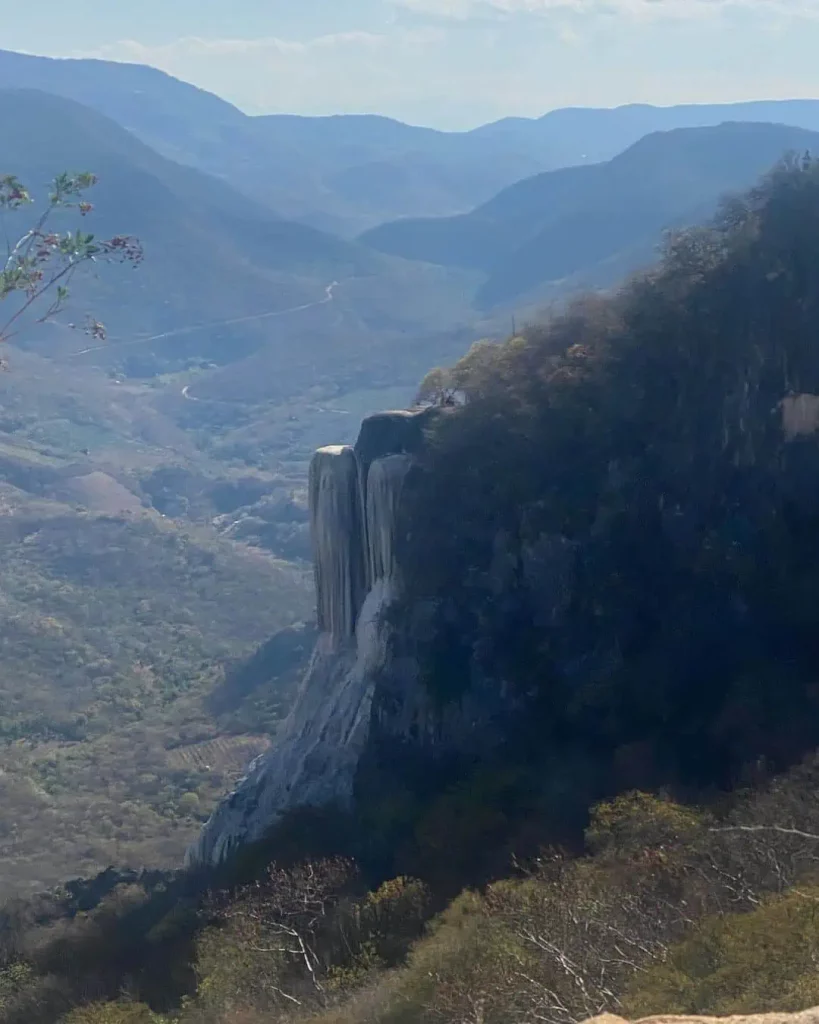
Hierve el Agua is a natural travertine rock structure in Oaxaca that gives a distant view of a waterfall of white foam. The excessive calcium carbonate and other minerals in the nearby freshwater springs have caused the formation of this structure, and the minerals were deposited by the water flowing over the rocks over a thousand years.
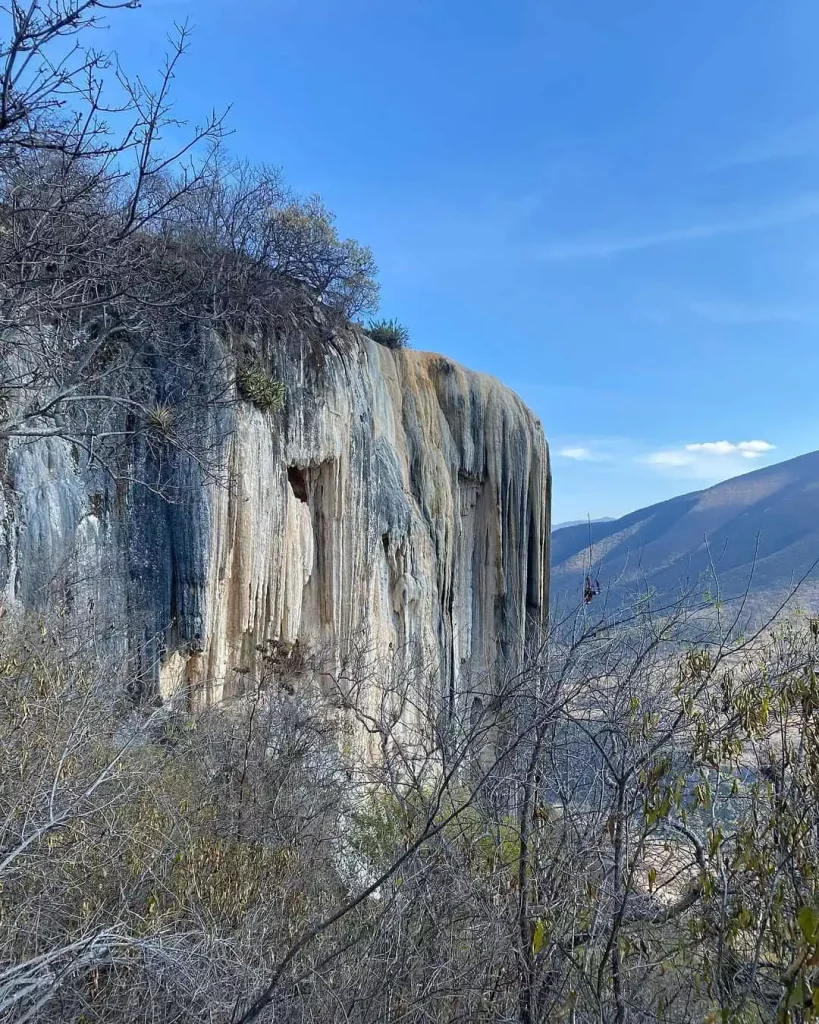
It is formed by two waterfalls and is around 90 meters high. Another important feature of the water that helps the creation of this waterfall is that the average temperature ranges from 22 to 27 degrees Celsius. As a result, it was given the moniker Hierve el Agua, which translates to “boiling water” in Spanish. It is widely thought that the high calcium carbonate content of the water has the power to treat ailments.
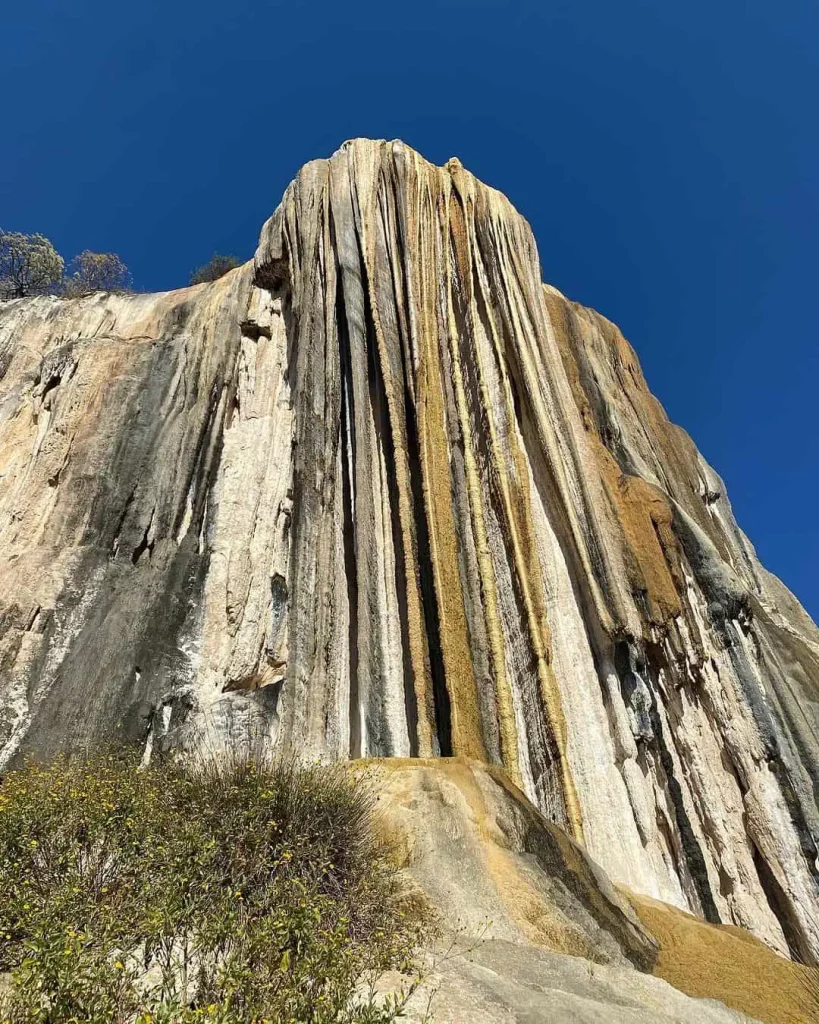
The place was important to the ancient people of the Oaxaca Valley and contains an irrigation system that dates back 2500 years. The waterfall draws a lot of people than other waterfalls in Mexico since it contains a natural infinity pool and many smaller pools. There are little restaurants where you may dine, booths where you can change clothes, and facilities where you can spend the night. This waterfall is also a year-round attraction.
Salto de Eyipantla
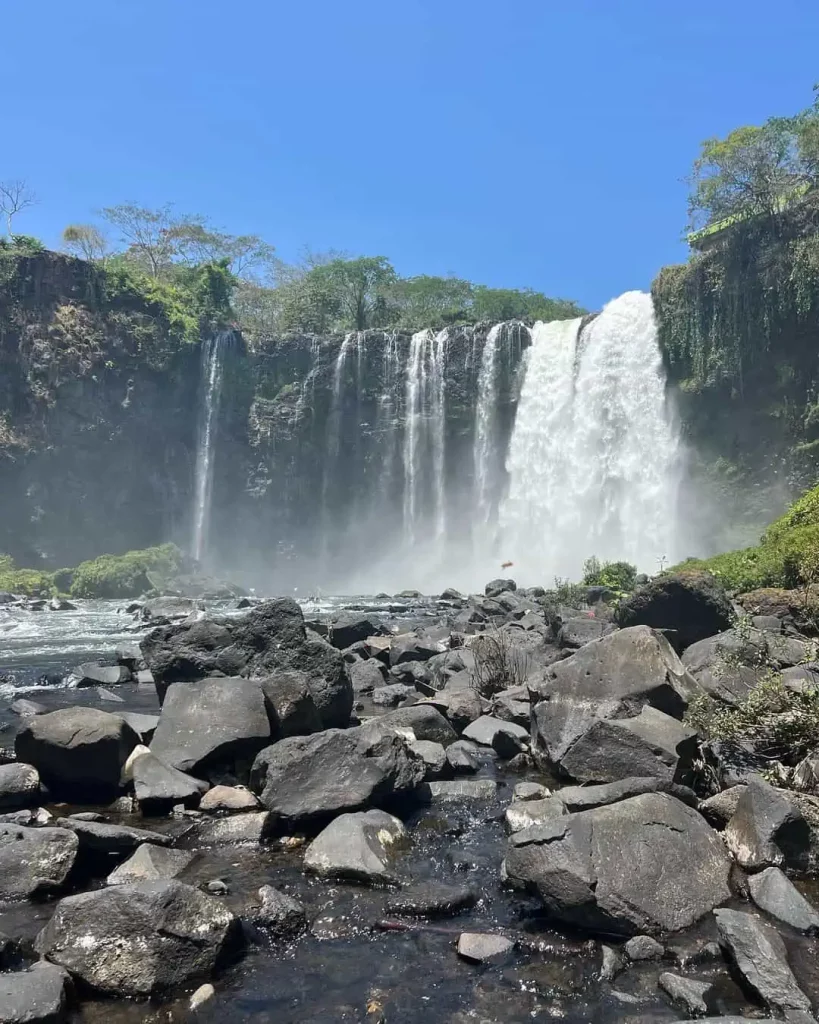
Among the waterfalls in Mexico, Salto de Eyipantla is a majestic 40-meter-wide waterfall that descends from a height of 50 meters located in San Andrés Tuxtla, Set amid a lush jungle backdrop, this natural wonder fascinates with its powerful cascades. The fact that several scenes were shot here for the world-famous Apocalypto and Medicine Man movies has contributed to its popularity. The name was Eyipantla is derived from the Nahuatl indigenous Mexican language and means “three streams”.
According to legend, Tlaloc, the Aztec religion’s rain god, is said to reside here. Over 500 tourists visit the falls every day, and restaurants and souvenir stalls fill the surrounding area. Visitors can view the falls from two perspectives, from below and from a higher platform. The high point also allows for a view of the surrounding mountains and rivers. To reach the lower station, one has to descend 244 steps. However, the best time to visit the Salto de Eyipantla is during the wet season from June to October when the flow of the falls is at its peak and displays its impressive power and beauty.
Cascadas de Misol Ha
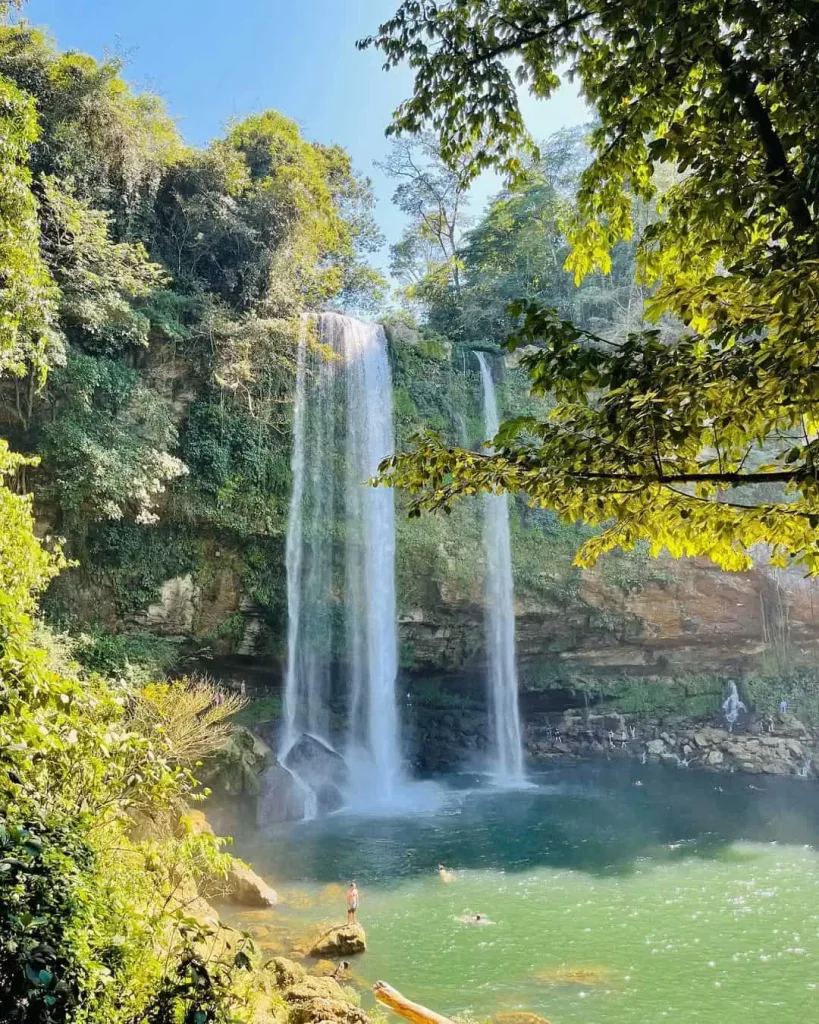
Cascadas de Misol Ha is a beautiful waterfall located in Chiapas, Mexico. Formed as a single fall at a height of 35 meters, it collapses into a circular pool. The cascading white water, the blue pool, and the surrounding green background add a beautiful background to the waterfall. You can swim in the pool or go around the pool to the waterfall if you want. There is also a 20-meter-long cave behind the falls.
As the surrounding area is of archaeological importance, it is not difficult to find accommodation facilities around the waterfall. The best time to see the Cascadas de Misol-Ha is from June to October as the falls are at their peak during the rainy season every year.
Puente de Dios
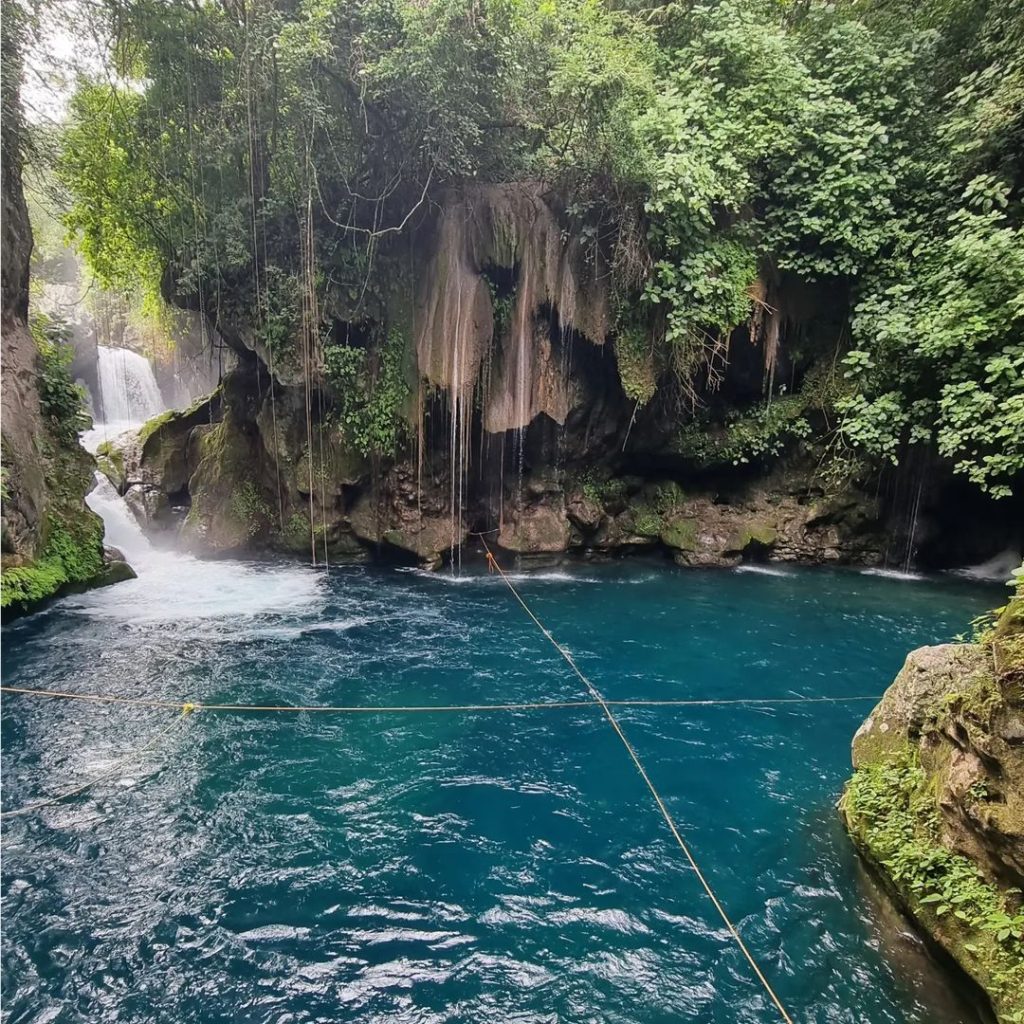
Puente de Dios is one of the best waterfalls in Mexico. It is such a natural wonder with its breathtaking height and beauty located in San Luis Potosí. The main attraction here is the turquoise-colored pool inside a cave which makes it a bit different from other waterfalls. Puente de Dios is approximately 10 meters high and offers tourists a unique and stunning waterfall and swimming experience.
The name here means Bridge of Gods and it truly gives a heavenly experience. The best time to visit Puente de Dios is the dry season from November to April. During this time the water is clear and ideal for swimming and exploring. However, if you visit here, it should be remembered that it is better to jump than try to get down over the slippery rocks to the pool.
Cusarare Falls
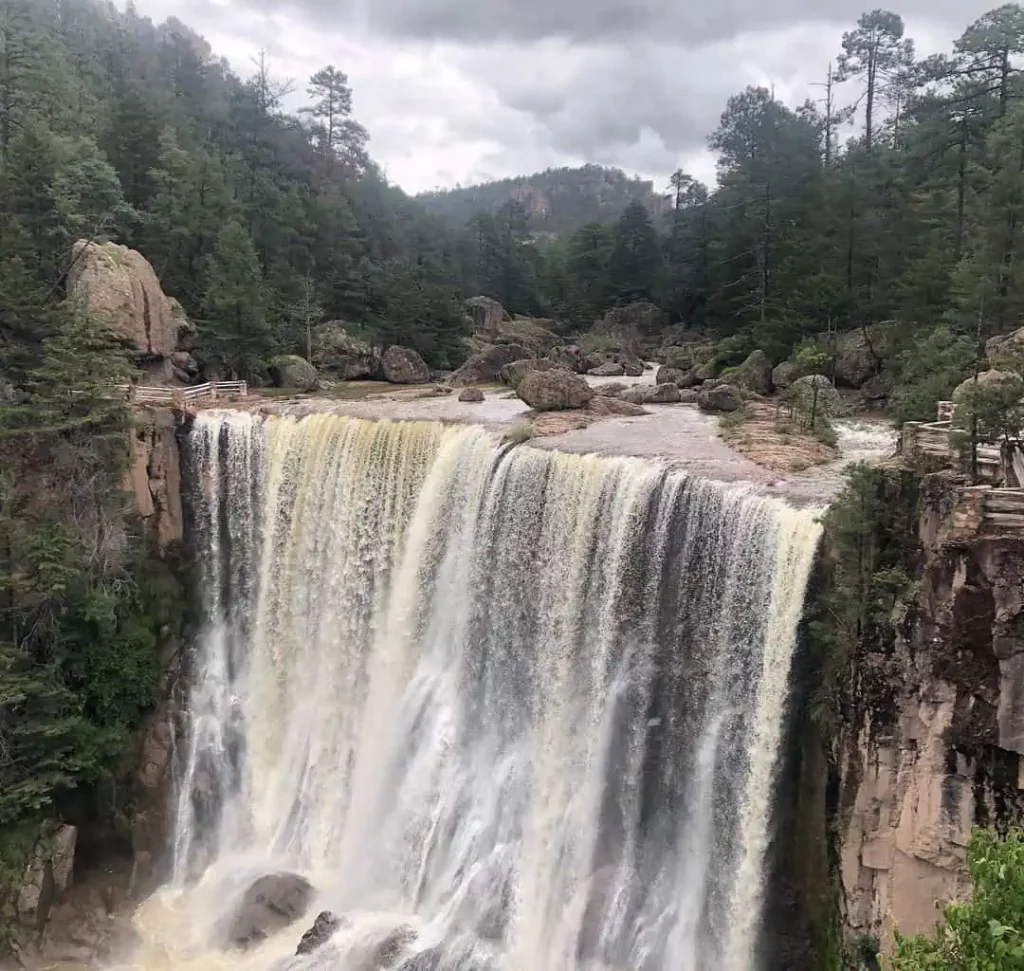
Cusarare Falls, located in Chihuahua, Mexico, offers a breathtaking panorama with 30-meter cascading falls. This natural wonder creates a tranquil environment amidst the lush pine forest. The best time to visit this waterfall is during the rainy season from June to September when the water flows strongly and displays its full magnificence. Accessible via moderate trails, Cusarare Falls provides an ideal location for hikers, nature lovers, and photographers seeking Mexico’s spectacular landscapes and tranquil waterfalls.
Cascadas de Tamasopo
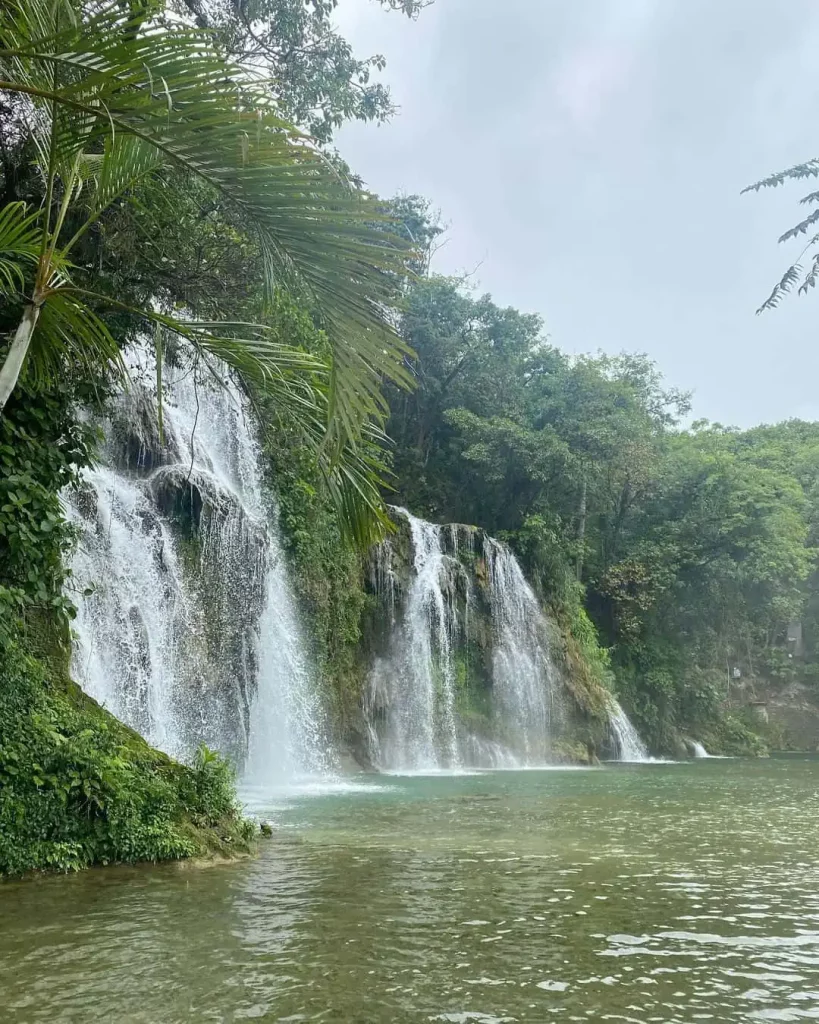
Cascadas de Tamasopo is a cluster of three waterfalls rather than one. It flows from a height of 15 meters into a large pool, transforming the area into a water park, for this reason, it has become one of the world-famous waterfalls in Mexico. It also provides a setting in which you may easily swim, jump, swing, play, rest, and eat throughout the day. This park has the allure of a great natural water park. The greatest time to visit the Tamasopo Falls is between September and November, when the water is turquoise and warm, showing the full magnificence of the falls.
Minas Viejas
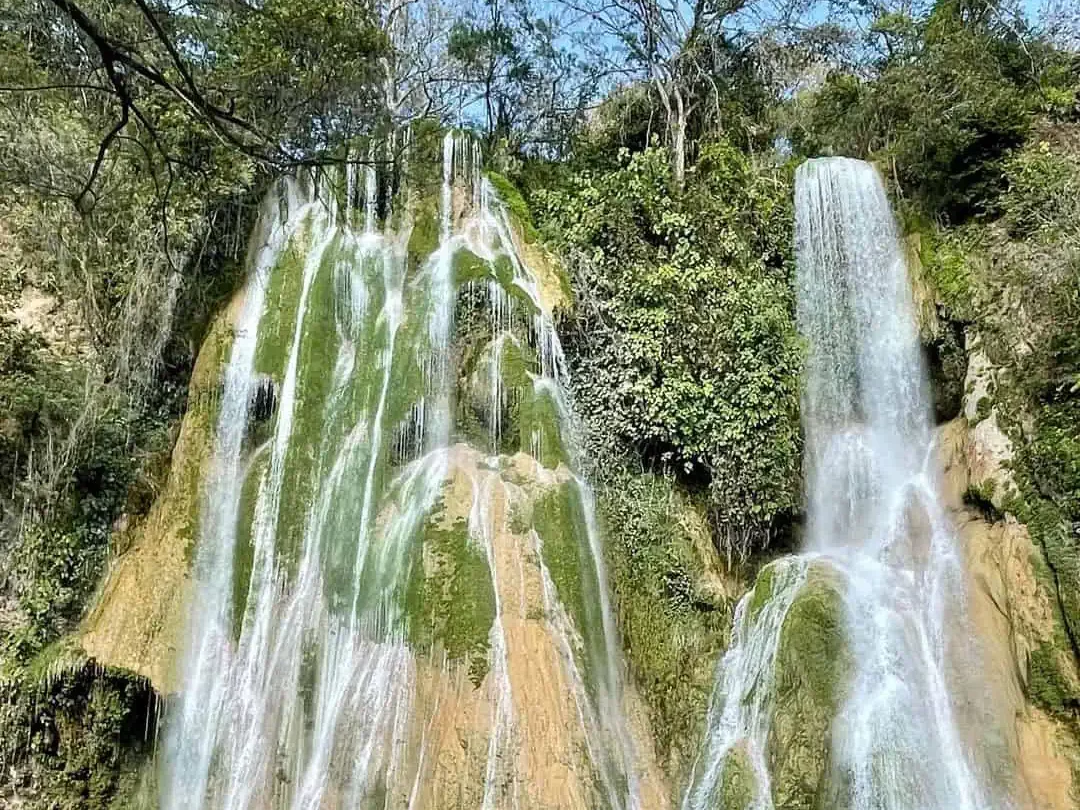
The Minas Viejas waterfall is of incomparable beauty due to the color of its water and the vegetation that surrounds it. Located near San Luis Potosí, these are two 50-meter high waterfalls that cascade over a pool and are surrounded by lush vegetation. You have no restrictions and all the necessary facilities to enjoy the waterfall. There are small eateries, restaurants, and shops selling drinks, snacks, snacks, and stations such as phone booths, as well as bathrooms and changing rooms on the way down. And if necessary, camping facilities have been provided next to the falls to spend the night.
Cascadas de Micos
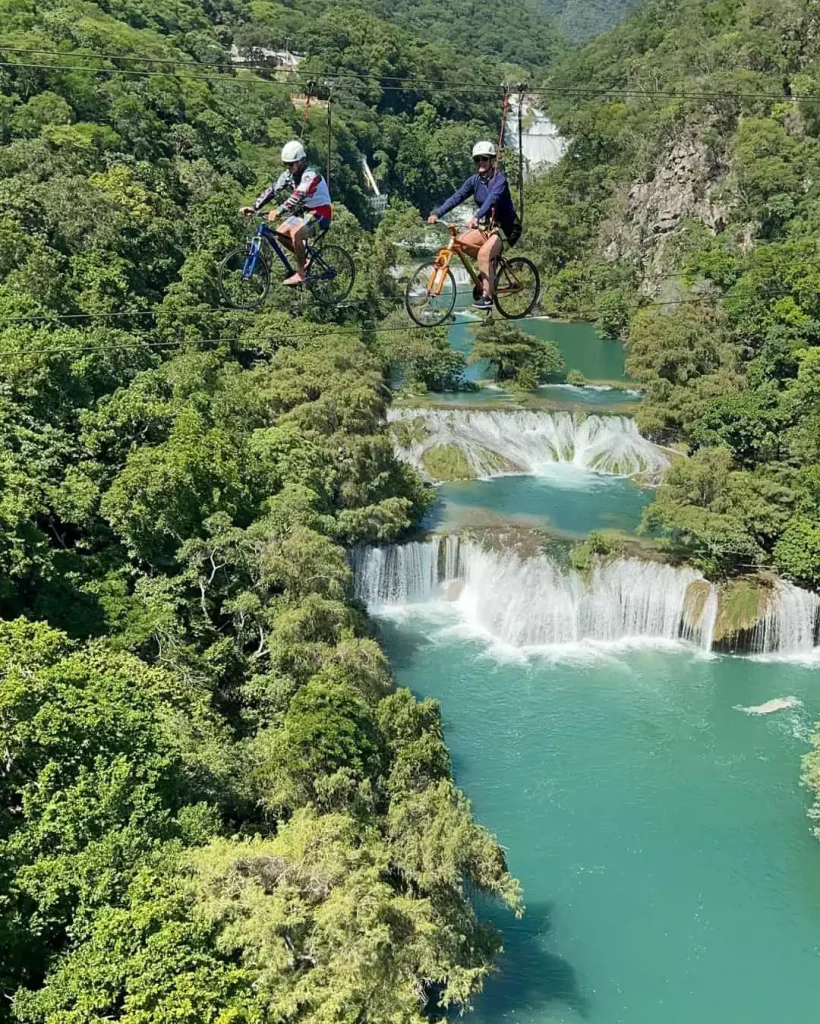
Cascadas de Micos is a series of seven small waterfalls and sparkling milky blue pools, one of the most adventurous and thrilling waterfalls in Mexico located in San Luis Potosí. With an average height of around 20 meters, their beautiful bright turquoise-green color and the activities in the area make it an incredible destination to visit. You can do activities such as jumping into the pool and swimming in the waterfall, and also possible to take a boat tour to see the Micos waterfalls in Mexico.
If you like to relax, there is a place for camping and tables for picnics. For the more adventurous activity seekers, you can take part in ziplining or sky-biking over the park’s waterfalls. The best time to visit Cascadas de Micos is between September and November. This is the end of the rainy season and It offers the water clear, turquoise in color, and warm.
Cascada Agua Blanca
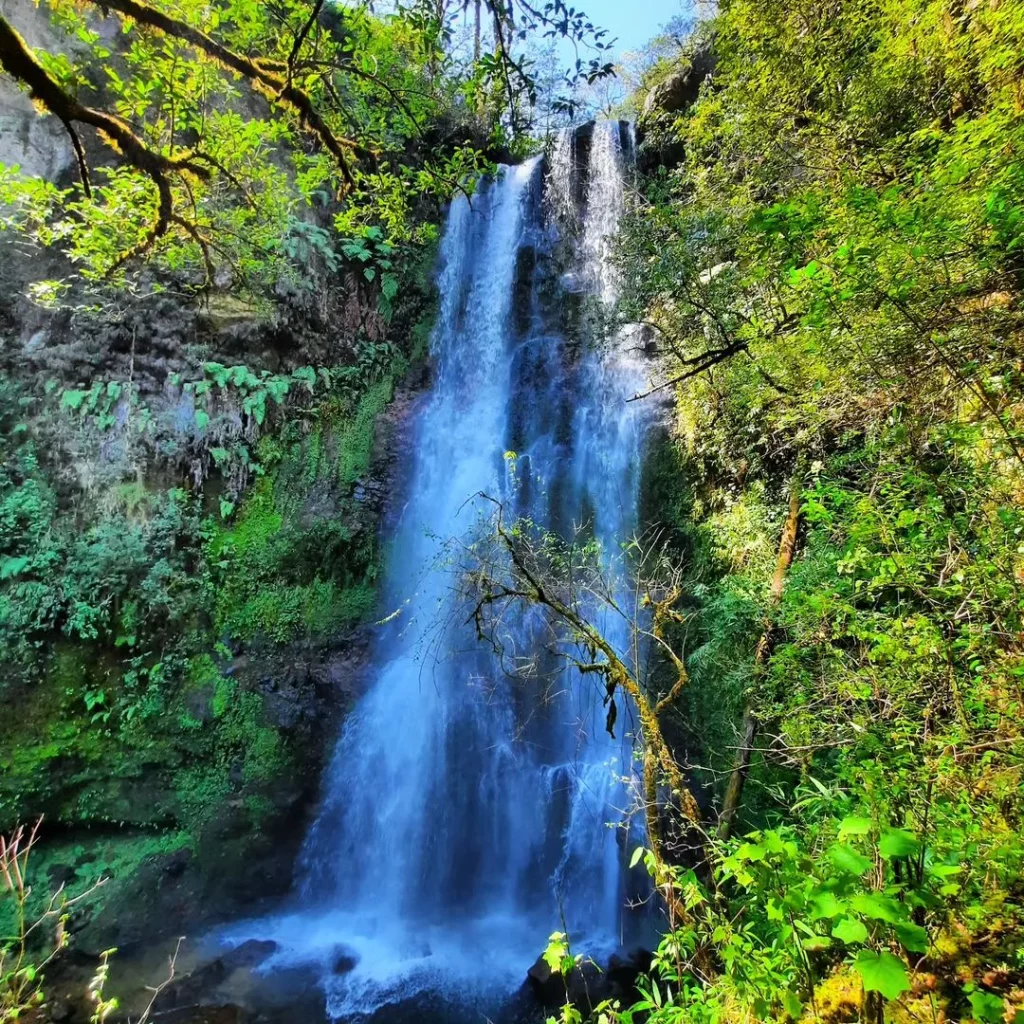
Agua Blanca is a series of waterfalls cascading down slipping over the rocks before crashing into a white pool that invites swimming. It is located in Tabasco. The waterfall area is a protected natural area with a vast forest full of diverse flora and fauna including its cave attractions. The park offers many other facilities including parking, swimming pools, as well as places to eat, and sanitation services.
Cascada El Aguacate
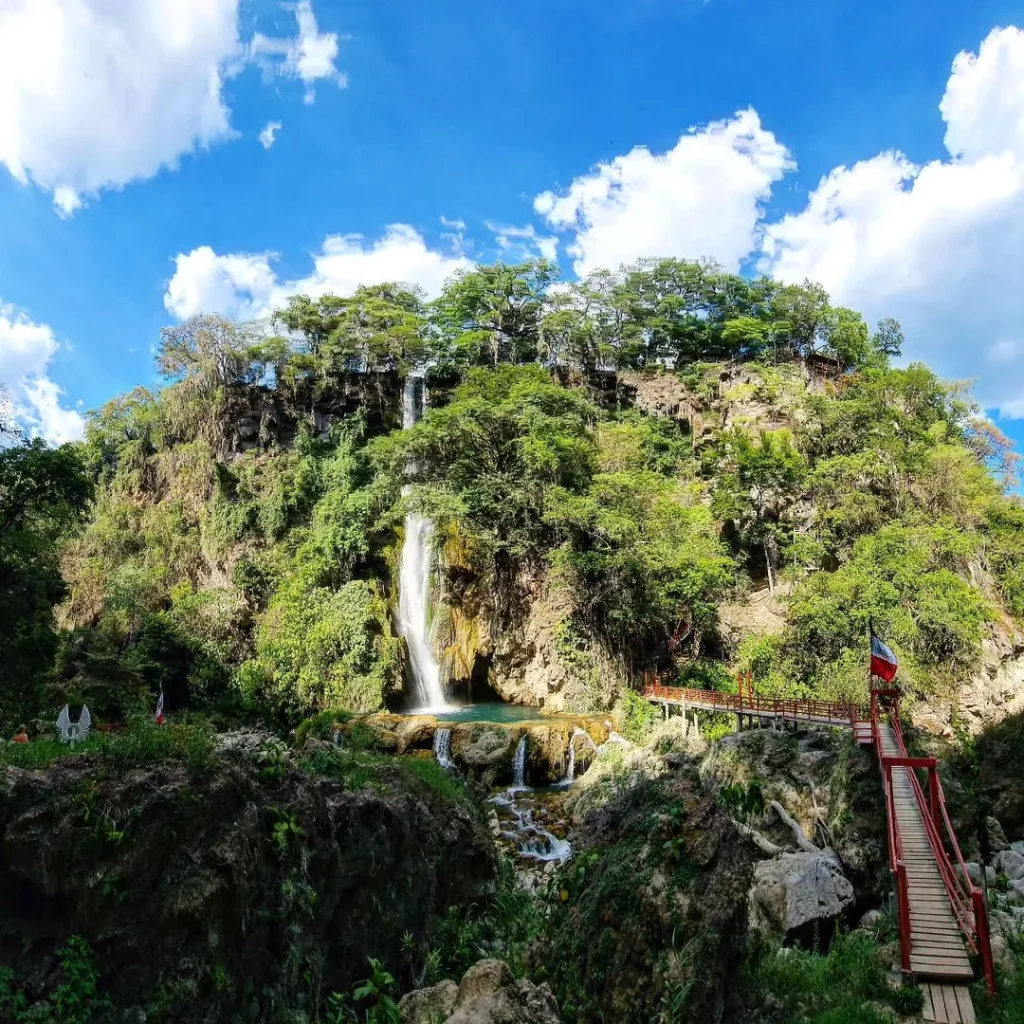
Cascada El Aguacate is located in La Huasteca Potosina but is not as popular as other waterfalls in Mexico. It is located in a rainforest area in this area. Considering the height, it is only 70 meters. There is a small pool where the falls fall, but bathing there is not a good idea because of the strong currents even in the dry season. There are no major facilities around and the area has only essential facilities.
Cascada de Roberto Barrios
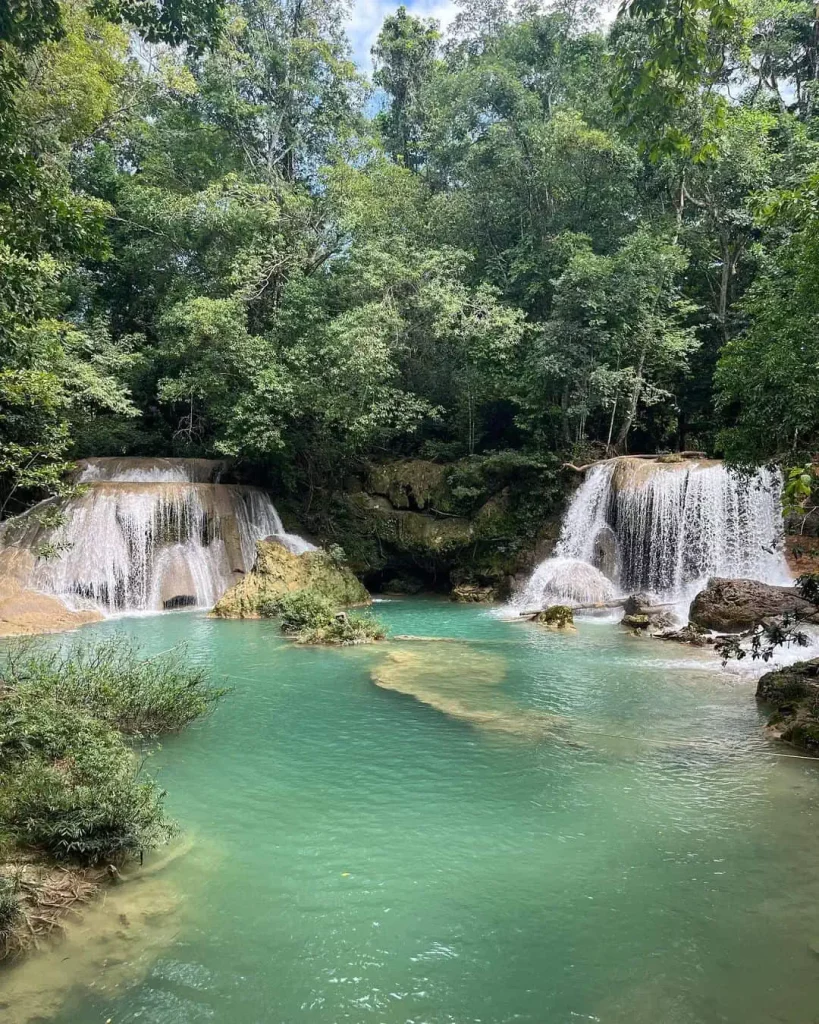
Roberto Barrios is a beautiful Waterfall that is surrounded by thick forest and jungle in Chiapas, Mexico. Here you will find five different waterfalls, crystal-clear turquoise water, a natural swimming pool, and even a natural 10-meter-long water slide. Moreover, at the top of the waterfall, you can see an infinity pool and from there you can see the waterfall and the natural pool below.
Many waterfalls have natural slides that you can slide down and enjoying them is another very popular activity. The environment around the falls is a kingdom of birds and monkeys. The best time to visit Cascada de Roberto Barrios is between September and November, when the water is turquoise and warm, showing the full magnificence of the falls.
Cascadas El Meco
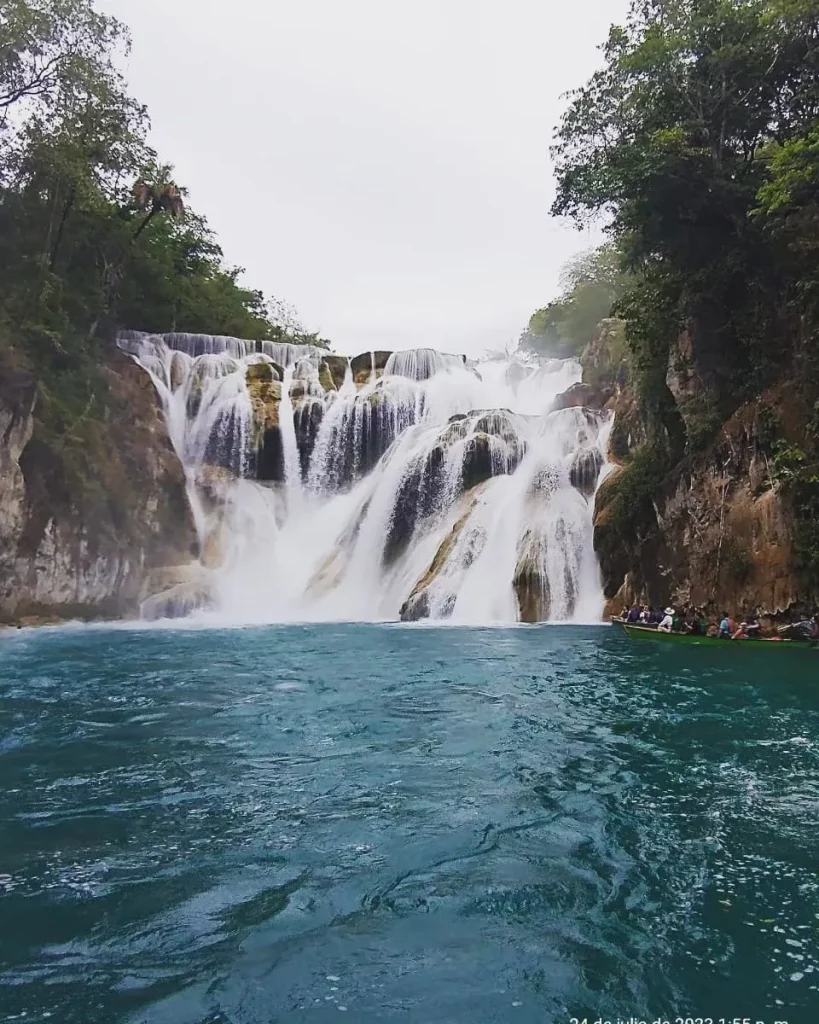
There are many undiscovered places that are not well-known among tourists. Waterfalls in Mexico are one of them. El Meco Falls is one such hidden gem. It is around 35 meters high and is situated near La Husateca Potosina. Visitors have the option of seeing the waterfall from a platform above or taking a boat ride to its base. If you are a good swimmer in the current you can swim down to the pool at the bottom of the falls but a life jacket is a must. We recommend September to November as the best time to visit the Cascadas El Meco but keep in mind that the area can get quite busy during Mexico’s holidays and on weekends
Yelapa
Mexico’s Yelapa Falls has a massive drop of approximately 150 feet, creating a beautiful natural scene amid lush tropical surroundings. Accessible by a scenic hike through the village of Yelapa, this hidden gem invites adventure seekers and nature lovers to enjoy its beauty, swim in its refreshing pools, and capture the serene atmosphere. The best time to visit the Yelapa waterfall is during the rainy season June to October, when the water falls profusely and offers a breathtaking view.
Conclusion
Waterfalls are a tribute to nature’s beauty, bringing visitors from all over the world to marvel at their splendor. Each waterfall has a story to tell about resilience and beauty, and the wonder it holds is an awe-inspiring experience for visitors. So, Including some or all of the following waterfalls in Mexico on your bucket list throughout your waterfall hunting will leave you with the best experience.


